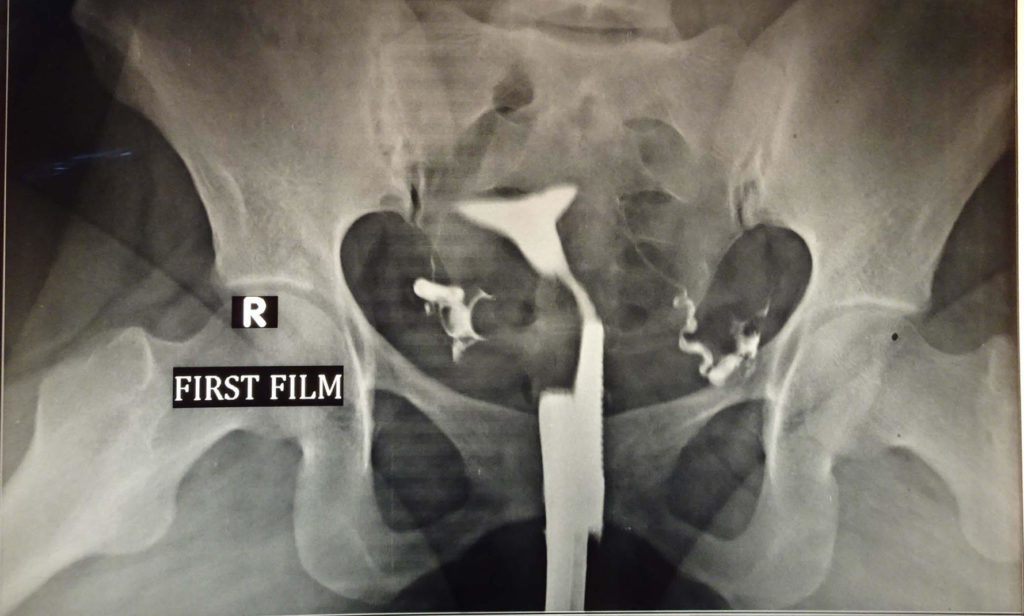HSG Test
HSG or Hysterosalpingography is a tubal patency test done to check if there are any blocks in fallopian tubes causing a delay in conception.
This is generally done between day 7 to day 9 of the menstrual cycle. A radiocontrast iodine dye is gently passed into the uterine cavity through a small cannula while taking an X-ray simultaneously to see the uterine cavity and tubes on both sides.
This is one indirect way of checking tubal patency especially when marital life is short or it can be done before planning ovulation induction or IUI.

Diagnostic laparoscopy and chromotubation is the gold standard test to check fallopian tubes because spillage or blocks are directly visualized through laparoscopy.
HSG does not require anesthesia and it is less expensive when compared to diagnostic laparoscopy.
Mild pain or discomfort is common with HSG, both during the procedure and afterward. The cramping may last anywhere from five minutes after the procedure to a few hours.
One theory is that the dye flushes out the fallopian tubes, clearing minor blocks in some women.
It is important to take proper medical advice and precautions before planning HSG.



